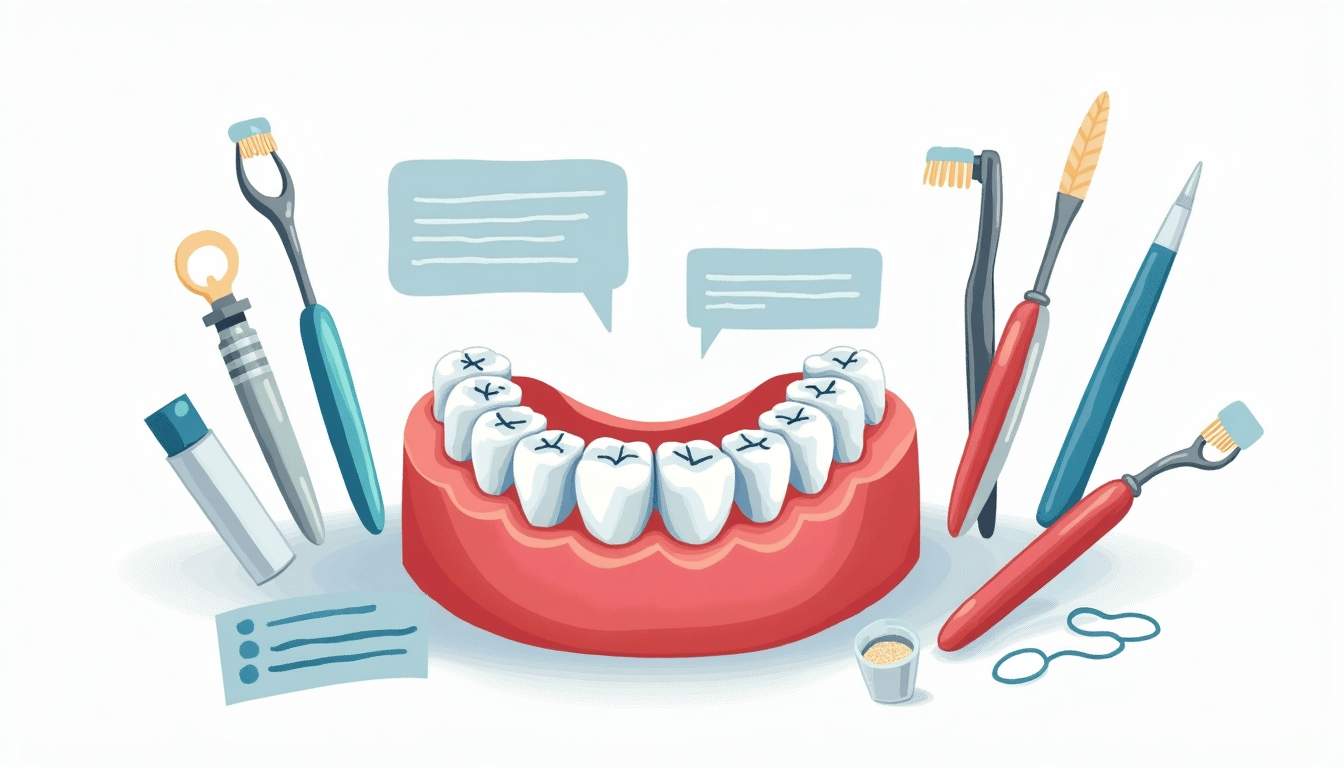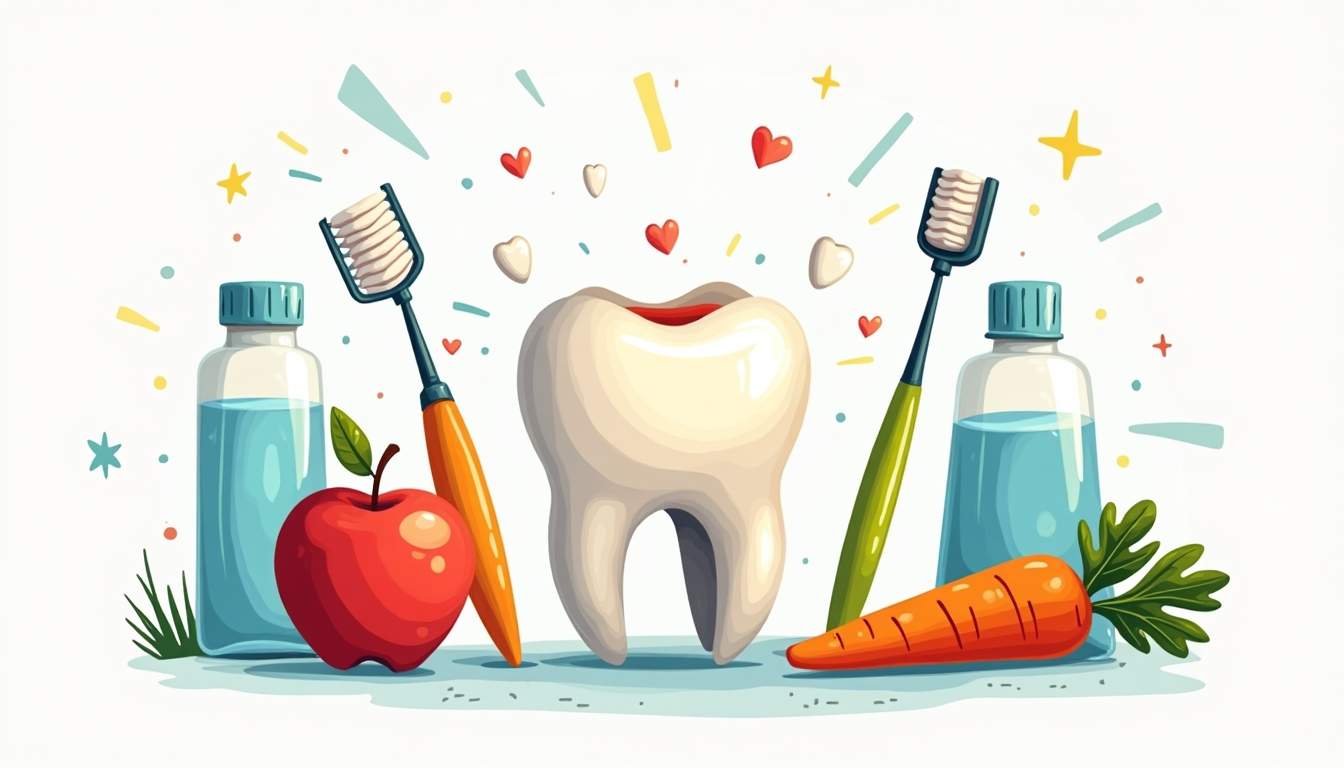Ensuring children develop healthy dental habits early on is essential for their overall well-being. From the first tooth that breaks through the gums to the teenage years, dental care evolves to meet the changing needs of growing mouths. Comprehensive children’s dental care encompasses a variety of preventive and treatment measures designed to protect young smiles and foster lifelong oral health.
This article explores the key aspects of pediatric dental care, including routine exams, preventive treatments like sealants and fluoride applications, the importance of proper hygiene, and how to handle common dental issues. Understanding these components helps parents and caregivers make informed decisions that support their child’s dental health journey.
The Importance of Early Dental Exams
Regular dental exams are the cornerstone of maintaining healthy teeth and gums in children. The American Academy of Pediatric Dentistry recommends that children visit a dentist by their first birthday or within six months after their first tooth appears. Early dental visits allow dentists to monitor oral development, identify potential problems, and provide guidance tailored to the child’s age and needs. These early interactions with dental professionals can also help to demystify the dental environment, reducing anxiety and fostering a positive attitude towards oral health that can last a lifetime.
During these exams, dentists assess the growth of the teeth and jaws, check for signs of decay or gum disease, and evaluate habits such as thumb sucking or teeth grinding. Early detection of issues can prevent more serious problems down the road, making these visits invaluable. Additionally, establishing a routine of regular dental check-ups can help children develop good oral hygiene habits, as they learn the importance of taking care of their teeth from a young age. This proactive approach not only contributes to a healthier smile but also promotes overall well-being. For trusted care, you can visit Kellyville dentist to ensure your child receives the best dental support.
What Happens During a Pediatric Dental Exam?
A pediatric dental exam is designed to be gentle and reassuring, helping children feel comfortable and confident about dental care. Typically, the dentist will:
- Examine the teeth and gums for cavities, plaque, or signs of infection.
- Check the bite and jaw alignment.
- Assess oral hygiene and provide personalized advice on brushing and flossing.
- Discuss diet and habits that affect dental health.
- Answer any questions parents or children may have.
In some cases, X-rays may be taken to get a clearer picture of the teeth below the surface, especially if there are concerns about decay or developmental issues. These X-rays are crucial for detecting problems that are not visible during a regular examination, such as impacted teeth or cavities between teeth. Moreover, the dentist may also take this opportunity to educate both the child and their parents about the stages of dental development, including the timeline for losing baby teeth and the emergence of permanent teeth. This knowledge can empower families to be proactive in their dental care and to understand what to expect as their child grows.
Furthermore, pediatric dental exams often include a discussion about the importance of a balanced diet rich in nutrients that support dental health. Dentists may recommend foods high in calcium and phosphorus, which are essential for strong teeth, while also advising on limiting sugary snacks and beverages that can lead to cavities. By incorporating these dietary tips into their daily routine, parents can significantly influence their child’s dental health, ensuring that their smiles remain bright and healthy as they grow. This holistic approach to dental care emphasizes that oral health is not just about regular check-ups but also about fostering healthy habits that can last a lifetime.
Preventive Treatments: Sealants and Fluoride Applications
Prevention is key in pediatric dentistry. Two of the most effective preventive treatments are dental sealants and fluoride applications. These treatments help shield children’s teeth from decay and strengthen enamel, reducing the risk of cavities.

Dental Sealants: A Protective Barrier
Dental sealants are thin, plastic coatings applied to the chewing surfaces of the back teeth (molars and premolars). These surfaces have grooves and pits that can trap food particles and bacteria, making them prone to cavities. Sealants act as a barrier, sealing these vulnerable areas and preventing decay.
The application process is quick, painless, and non-invasive. The dentist cleans the tooth surface, applies a special gel to help the sealant bond, and then paints the sealant onto the tooth. A curing light hardens the material in seconds, and the sealant can last for several years with proper care.
Sealants are especially beneficial for children as soon as their permanent molars come in, typically around ages 6 and 12. By protecting these teeth early, sealants significantly reduce the likelihood of cavities and the need for fillings.
Fluoride Treatments: Strengthening Enamel
Fluoride is a naturally occurring mineral that helps strengthen tooth enamel and makes teeth more resistant to acid attacks from plaque bacteria and sugars in the mouth. Fluoride treatments in a dental office involve applying a concentrated fluoride varnish or gel to the teeth, which adheres to the enamel and provides extra protection.
These treatments are especially important for children at higher risk of cavities, such as those with a history of decay, poor oral hygiene, or limited access to fluoridated water. Fluoride varnishes are safe, quick to apply, and can be done during routine dental visits.
In addition to professional treatments, parents can support fluoride use at home by ensuring children use fluoride toothpaste and drink fluoridated water when available.
Establishing Good Oral Hygiene Habits
While dental exams and preventive treatments provide essential protection, daily oral hygiene practices form the foundation of children’s dental health. Teaching children proper brushing and flossing techniques early on helps them develop habits that last a lifetime.
Brushing: The First Line of Defense
Brushing teeth twice a day with fluoride toothpaste is crucial for removing plaque and food debris. For infants and toddlers, parents should use a soft-bristled toothbrush and a smear of fluoride toothpaste about the size of a grain of rice. As children grow, the amount of toothpaste can increase to a pea-sized amount.
Encouraging children to brush for two minutes ensures thorough cleaning. Using timers, fun songs, or apps designed for kids can make brushing enjoyable and effective. Parents should supervise brushing until children develop the dexterity to do it well on their own, usually around age 7 or 8.
Flossing: Cleaning Between the Teeth
Flossing removes plaque and food particles from areas that toothbrushes can’t reach, such as between teeth and under the gumline. Parents should introduce flossing as soon as two teeth touch, which can happen in infancy or toddlerhood.
Flossing can be challenging for young children, so parents may need to assist or perform the task until children are capable. Using floss picks or floss holders can make the process easier and more comfortable.
Healthy Diet and Its Impact on Dental Health
Diet plays a significant role in dental health. Frequent consumption of sugary snacks and drinks increases the risk of cavities by feeding harmful bacteria in the mouth. Encouraging a balanced diet rich in fruits, vegetables, whole grains, and dairy products supports strong teeth and gums.
Limiting sugary treats and promoting water as the primary beverage helps reduce acid attacks on enamel. Additionally, chewing sugar-free gum after meals can stimulate saliva production, which naturally cleanses the mouth and neutralizes acids.
Addressing Common Pediatric Dental Issues
Despite best efforts, children may still encounter dental problems. Understanding common issues and their treatments helps parents respond promptly and effectively.

Tooth Decay and Cavities
Tooth decay is the most common chronic disease in children. It occurs when acids produced by bacteria break down tooth enamel, leading to cavities. Early signs include white spots on teeth, sensitivity, or visible holes.
Treatment depends on the severity of the decay. Minor cavities may be treated with fluoride and sealants, while more advanced decay might require fillings or crowns. Regular dental visits and preventive care are crucial to minimizing the risk of cavities.
Teething Discomfort
Teething can cause discomfort, irritability, and drooling in infants. While this is a normal developmental stage, parents can help soothe their babies by offering teething rings, gently massaging the gums, or using cold washcloths.
Avoid using numbing gels or medications without consulting a pediatrician or dentist, as some products may not be safe for young children.
Thumb Sucking and Pacifier Use
Thumb sucking and pacifier use are common soothing behaviors in young children. However, prolonged habits beyond age 4 or 5 can affect the alignment of teeth and jaw development.
Parents should gently encourage children to reduce these habits as they grow, using positive reinforcement and distraction techniques. If necessary, dentists can provide guidance or appliances to help break the habit.
Choosing the Right Pediatric Dentist
Finding a dentist who specializes in children’s dental care can make a significant difference in the experience and outcomes of dental visits. Pediatric dentists receive additional training focused on child psychology, growth and development, and specialized treatments.

A child-friendly dental office creates a welcoming environment with staff trained to handle young patients’ needs and fears. This helps children feel comfortable and builds trust, which is essential for long-term dental health.
What to Look for in a Pediatric Dentist
- Credentials: Ensure the dentist is board-certified in pediatric dentistry.
- Experience: Look for dentists with extensive experience working with children of various ages.
- Office Environment: A child-friendly atmosphere with toys, books, and a welcoming staff.
- Communication: The ability to explain procedures in a way children and parents understand.
- Emergency Care: Availability of urgent care for dental emergencies.
Preparing Children for Dental Visits
Positive dental experiences start with preparation. Parents can help children feel at ease by talking about what to expect, using simple language, and avoiding negative words like “pain” or “hurt.”
Reading books or watching videos about dental visits can familiarize children with the process. Bringing a favorite toy or comfort item to the appointment can also provide reassurance.
Celebrating good behavior and rewarding children after visits encourages a positive attitude toward dental care.
Conclusion
Comprehensive children’s dental care is a multifaceted approach that combines regular exams, preventive treatments like sealants and fluoride, proper daily hygiene, and timely intervention for dental issues. By prioritizing these elements, parents and caregivers can help children develop healthy smiles that last a lifetime.
Early and consistent dental care not only prevents pain and costly treatments but also fosters confidence and well-being. Partnering with a skilled pediatric dentist and maintaining open communication about oral health ensures children receive the best possible care at every stage of their development.








